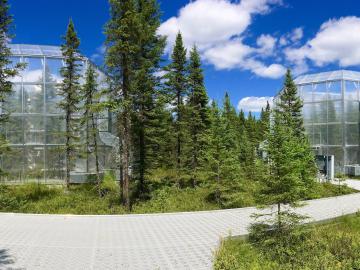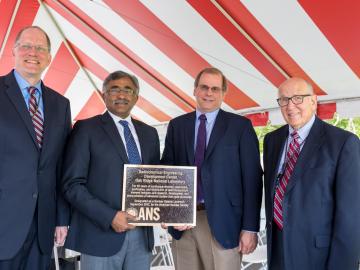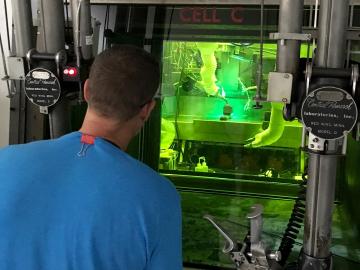
Filter News
Area of Research
- (-) Climate and Environmental Systems (4)
- (-) Nuclear Science and Technology (25)
- Advanced Manufacturing (8)
- Biological Systems (3)
- Biology and Environment (8)
- Building Technologies (3)
- Clean Energy (108)
- Computational Biology (1)
- Computational Engineering (1)
- Computer Science (8)
- Energy Frontier Research Centers (1)
- Fossil Energy (1)
- Fuel Cycle Science and Technology (1)
- Fusion Energy (7)
- Materials (107)
- National Security (7)
- Neutron Science (49)
- Nuclear Systems Modeling, Simulation and Validation (1)
- Quantum information Science (3)
- Sensors and Controls (2)
- Supercomputing (54)
- Transportation Systems (1)
Media Contacts

A futuristic experiment simulating warmer environmental conditions has shown that peatland vegetation responds to higher temperatures with an earlier and longer growth period.

A tiny vial of gray powder produced at the Department of Energy’s Oak Ridge National Laboratory is the backbone of a new experiment to study the intense magnetic fields created in nuclear collisions.

The Department of Energy’s Oak Ridge National Laboratory is now producing actinium-227 (Ac-227) to meet projected demand for a highly effective cancer drug through a 10-year contract between the U.S. DOE Isotope Program and Bayer.

The American Nuclear Society has designated the Radiochemical Engineering Development Center at the Department of Energy’s Oak Ridge National Laboratory an ANS Nuclear Historic Landmark, recognizing more than 50 years of isotope production and nuclear fuel cycle resear...

Thanks in large part to developing and operating a facility for testing molten salt reactor (MSR) technologies, nuclear experts at the Energy Department’s Oak Ridge National Laboratory (ORNL) are now tackling the next generation of another type of clean energy—concentrating ...
For the past six years, some 140 scientists from five institutions have traveled to the Arctic Circle and beyond to gather field data as part of the Department of Energy-sponsored NGEE Arctic project. This article gives insight into how scientists gather the measurements that inform t...


Scientists of the Department of Energy’s Light Water Reactor Sustainability Program (LWRS) and partners from the Electric Power Research Institute (EPRI) have conducted the first weld tests to repair highly irradiated materials at DOE’s Oak Ridge National Laboratory.



